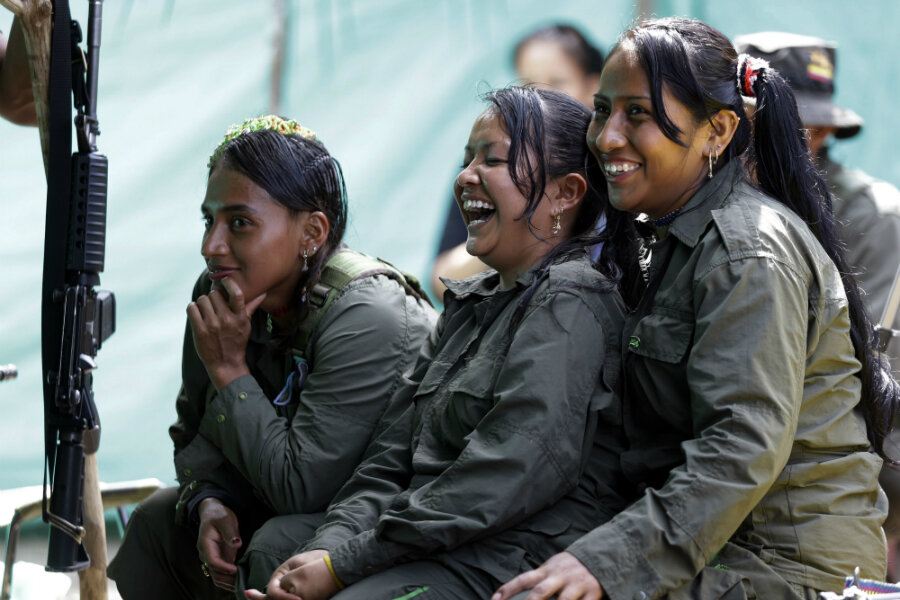Has Colombia reached a peace deal with FARC?
After four long years, representatives of Colombia’s government and the Revolutionary Armed Forces of Colombia (FARC) rebels say they’ve all but concluded negotiations over a peace deal that would bring a five-decade war to a formal end.
On Tuesday night, rebel commander Timoleón “Timochenko” Jiménez wrote on Twitter, “We’re at the doorstep of important news that brings us closer to the final accord.”
After the government published a photo of negotiators from both sides under a banner reading, “The day is coming. We’re on the road to peace,” speculation grew that an announcement could come as soon as Wednesday evening, according to the Associated Press.
With negotiations ended, rebel leaders must return to Colombia for what would be the group’s final conference as combatants, to inform their troops on the details of the accord, according to El Tiempo. The troops must then ratify them before leaders join Colombian president Juan Manuel Santos to sign the final deal.
The Colombian public will also need to ratify the deal through a simple plebiscite – a “yes” or “no” vote on whether to accept the accord. There’s no guarantee of it passing: In a mid-August poll, a razor-thin majority of respondents said they would vote to accept it, but other polls from this month show “no” voters prevailing.
But even as Colombia awaits final word on its peace deal, the nation has been inching its way toward a more peaceful society overall, as Howard LaFranchi reported in a cover story for The Christian Science Monitor in March:
[A]s the country moves tantalizingly close to putting an end to its long war ... Colombia is a very different place. Killings, kidnappings, and disappearances are all down sharply: Murders, which totaled 26,250 in 2001, fell by more than half to 12,750 in 2014. Bombings, field battles, and massacres are no longer daily front-page fare. With security reestablished in many places, notably cities such as the capital, Bogotá, and the Millennial-cool Medellín, private investment is flooding in and the middle class has expanded.
Only if the public votes in favor of the deal, may the hardest work – and the greatest risks to an enduring social peace – begin. As The Christian Science Monitor noted in June, the Colombian government is signing onto a huge new raft of obligations in exchange for peace.
The FARC … is reportedly more worried about another precedent: The last time they put down their weapons, in 1980s, thousands of members of their affiliated political party were murdered in retribution.
Under the terms of the eventually-hoped-for peace accord, the FARC is supposed to help the government eradicate coca crops. In return, the government has to effectively build a modern state in remote areas, committing to development projects such as building roads, and creating more equitable land ownership for farmers.
In June, the Monitor’s editorial board highlighted the unusual approach to peace pioneered by the two sides in the conflict. Even as armed conflict between them continued to smolder, the government and the rebels worked toward peace by negotiating agreements on a series of specific issues:
There’s a lesson for other world conflicts in this ‘peace first’ approach. It is that peace must be seen not merely as the absence of war but as a tangible reality. For Colombia that reality has been designed through difficult talks to include interim pacts on truth-telling about past abuses, a measure of justice for victims, an eventual coexistence between old foes, and broad economic and social reforms.
It may sound odd, but the negotiators describe the approach this way: ‘Fight the war as if there is no peace process and conduct the peace process as if there is no war.’ In other words, protect the peace process from flare-ups in the war that might derail it.
This report contains material from the Associated Press.






